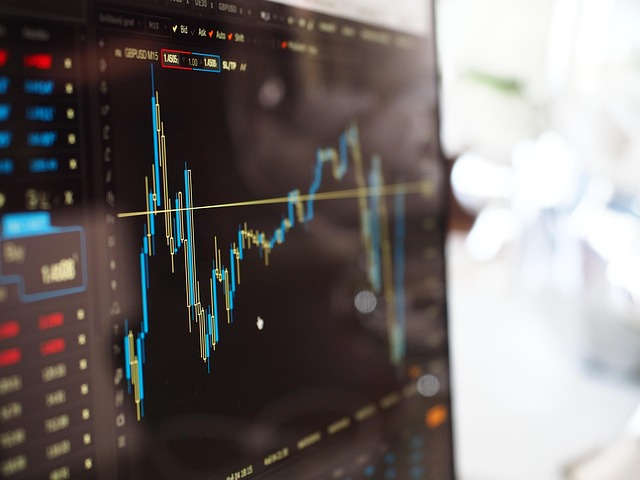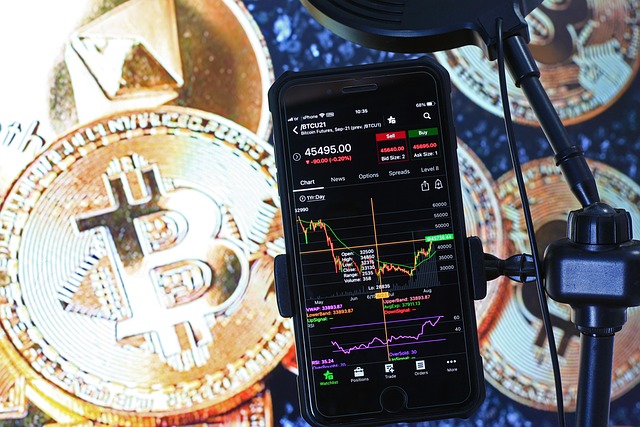Trump’s pick for SEC chair makes it out of committee
Lawmakers in the US Senate Banking Committee voted to advance the nomination of Paul Atkins to be a member of Securities and Exchange Commission (SEC), paving the way for a full floor vote in the chamber.In an April 3 executive session of the banking committee, lawmakers voted 13-11 for Atkins to serve two consecutive terms as an SEC commissioner, taking over former Chair Gary Gensler’s term and another term ending in 2031. Atkins’ nomination will soon go to the Republican-controlled Senate for a full floor vote, where many experts suggest he is likely to be confirmed.Senator Tim Scott addressing lawmakers on April 3. Source: US Senate Banking CommitteeBefore calling for a vote, committee chair Tim Scott said Atkins would bring “much-needed clarity for digital assets.” Ranking member Elizabeth Warren reiterated earlier concerns about Trump’s SEC pick helping “billionaire scammers” like former FTX CEO Sam Bankman-Fried and Tesla CEO Elon Musk “actively trying to destroy” federal agencies. Related: Crypto has a regulatory capture problem in Washington — or does it?The committee also advanced nominations for Jonathan Gould as Comptroller of the Currency, Luke Pettit as Assistant Secretary of the Treasury, and Marcus Molinaro as Federal Transit Administrator. The majority of Democrats on the committee were not present on April 3, with Senator Warren acting as a proxy for many votes.This is a developing story, and further information will be added as it becomes available.
How zero-knowledge proofs can make AI fairer
Opinion by: Rob Viglione, co-founder and CEO of Horizen LabsCan you trust your AI to be unbiased? A recent research paper suggests it’s a little more complicated. Unfortunately, bias isn’t just a bug — it’s a persistent feature without proper cryptographic guardrails.A September 2024 study from Imperial College London shows how zero-knowledge proofs (ZKPs) can help companies verify that their machine learning (ML) models treat all demographic groups equally while still keeping model details and user data private. Zero-knowledge proofs are cryptographic methods that enable one party to prove to another that a statement is true without revealing any additional information beyond the statement’s validity. When defining “fairness,” however, we open up a whole new can of worms. Machine learning biasWith machine learning models, bias manifests in dramatically different ways. It can cause a credit scoring service to rate a person differently based on their friends’ and communities’ credit scores, which can be inherently discriminatory. It can also prompt AI image generators to show the Pope and Ancient Greeks as people of different races, like Google’s AI tool Gemini infamously did last year. Spotting an unfair machine learning (ML) model in the wild is easy. If the model is depriving people of loans or credit because of who their friends are, that’s discrimination. If it’s revising history or treating specific demographics differently to overcorrect in the name of equity, that’s also discrimination. Both scenarios undermine trust in these systems.Consider a bank using an ML model for loan approvals. A ZKP could prove that the model isn’t biased against any demographic without exposing sensitive customer data or proprietary model details. With ZK and ML, banks could prove they’re not systematically discriminating against a racial group. That proof would be real-time and continuous versus today’s inefficient government audits of private data. The ideal ML model? One that doesn’t revise history or treat people differently based on their background. AI must adhere to anti-discrimination laws like the American Civil Rights Act of 1964. The problem lies in baking that into AI and making it verifiable. ZKPs offer the technical pathway to guarantee this adherence.AI is biased (but it doesn’t have to be)When dealing with machine learning, we need to be sure that any attestations of fairness keep the underlying ML models and training data confidential. They need to protect intellectual property and users’ privacy while providing enough access for users to know that their model is not discriminatory. Not an easy task. ZKPs offer a verifiable solution. ZKML (zero knowledge machine learning) is how we use zero-knowledge proofs to verify that an ML model is what it says on the box. ZKML combines zero-knowledge cryptography with machine learning to create systems that can verify AI properties without exposing the underlying models or data. We can also take that concept and use ZKPs to identify ML models that treat everyone equally and fairly. Recent: Know Your Peer — The pros and cons of KYCPreviously, using ZKPs to prove AI fairness was extremely limited because it could only focus on one phase of the ML pipeline. This made it possible for dishonest model providers to construct data sets that would satisfy the fairness requirements, even if the model failed to do so. The ZKPs would also introduce unrealistic computational demands and long wait times to produce proofs of fairness.In recent months, ZK frameworks have made it possible to scale ZKPs to determine the end-to-end fairness of models with tens of millions of parameters and to do so provably securely. The trillion-dollar question: How do we measure whether an AI is fair?Let’s break down three of the most common group fairness definitions: demographic parity, equality of opportunity and predictive equality. Demographic parity means that the probability of a specific prediction is the same across different groups, such as race or sex. Diversity, equity and inclusion departments often use it as a measurement to attempt to reflect the demographics of a population within a company’s workforce. It’s not the ideal fairness metric for ML models because expecting that every group will have the same outcomes is unrealistic.Equality of opportunity is easy for most people to understand. It gives every group the same chance to have a positive outcome, assuming they are equally qualified. It is not optimizing for outcomes — only that every demographic should have the same opportunity to get a job or a home loan. Likewise, predictive equality measures if an ML model makes predictions with the same accuracy across various demographics, so no one is penalized simply for being part of a group. In both cases, the ML model is not putting its thumb on the scale for equity reasons but only to ensure that groups are not being discriminated against in any way. This is an eminently sensible fix.Fairness is becoming the standard, one way or anotherOver the past year, the US government and other countries have issued statements and mandates around AI fairness and protecting the public from ML bias. Now, with a new administration in the US, AI fairness will likely be approached differently, returning the focus to equality of opportunity and away from equity. As political landscapes shift, so do fairness definitions in AI, moving between equity-focused and opportunity-focused paradigms. We welcome ML models that treat everyone equally without putting thumbs on the scale. Zero-knowledge proofs can serve as an airtight way to verify ML models are doing this without revealing private data. While ZKPs have faced plenty of scalability challenges over the years, the technology is finally becoming affordable for mainstream use cases. We can use ZKPs to verify training data integrity, protect privacy, and ensure the models we’re using are what they say they are. As ML models become more interwoven in our daily lives and our future job prospects, college admissions and mortgages depend on them, we could use a little more reassurance that AI treats us fairly. Whether we can all agree on the definition of fairness, however, is another question entirely.Opinion by: Rob Viglione, co-founder and CEO of Horizen Labs. This article is for general information purposes and is not intended to be and should not be taken as legal or investment advice. The views, thoughts, and opinions expressed here are the author’s alone and do not necessarily reflect or represent the views and opinions of Cointelegraph.
ParaSwap rebrands to Velora, introduces intent-based DEX trading feature
Decentralized exchange (DEX) aggregator ParaSwap announced its rebrand to Velora and is moving on to a new intents-based trading feature.According to an announcement shared with Cointelegraph, Velora’s just introduced its Delta v.2.5 upgrade. This supposedly results in improved flexibility and agility in trade execution on the DEX.Paraswap has seen 18,000 monthly active users over the last month with 4.3 million smart contract interactions over the past 365 days, according to TokenTerminal data. The platform first introduced intents-based trading back in the summer of 2024, with hopes that it would mitigate the negative impact of maximum extractable value (MEV) bots. Since then, ParaSwap submitted orders in three steps. First the order is preprocessed defining the expected trade price, then this is submitted to an auction to determine the most efficient execution strategy considering liquidity and timing. The winning agent executes the trade while taking the user’s intent into account and purportedly minimizing MEV exploitation risks.Related: Hyperliquid DEX trading volumes cut into CEX market share: DataA crypto MEV bot is an automated program that exploits profit opportunities in blockchain transaction ordering—using tactics like front-running and arbitrage to capture extra value. The project’s founder Mounir Benchemled said at the time:The presence of MEV impacts not only individual transactions but also the overall fairness, accessibility and decentralization of the DeFi ecosystem, making it one of the most pressing issues that needs addressing.”Velora’s intent-based trading implementationVelora’s implementation of intent-based trading is more customizable, giving the user “full control over their execution preferences, unlocks advanced features like limit orders, overcoming the constraints of single-block execution and increasing flexibility.” The new aggregator is also reportedly designed to allow for seamless cross-chain trading and enhanced performance.Related: Curve Finance clocks $35B trading volume in Q1 2025Sergej Kunz, Co-Founder of DEX aggregator 1inch, told Cointelegraph that “end users shouldn’t have to worry about the complexities” of decentralized finance. According to him, an intent-based system removes much of this complexity:“An intent-based system is designed to shift all risk and complexity away from users and into the hands of professionals who specialize in executing advanced DeFi strategies. A true intent-based DEX must provide MEV protection at the protocol level and offload execution complexity to professional trading bots.“Magazine: Financial nihilism in crypto is over — It’s time to dream big again
Beyond the hype: How Bitcoin stays true to its values
Bitcoin’s (BTC) journey from a radical experiment to a trillion-dollar asset has been fueled by grand narratives: Digital gold, decentralized money and an alternative financial system. Beyond the hype, how does Bitcoin remain true to its core values? That’s the central theme of the latest episode of The Clear Crypto Podcast, where hosts Nathan Jeffay and Gareth Jenkinson are joined by Charlie Spears, co-founder of Blockspace Media, to unpack Bitcoin’s evolving role in the global financial system.Bitcoin’s evolutionFrom the outset, Bitcoin was designed as a decentralized alternative to traditional money.But as adoption has surged, so too has the debate over its scalability and usability. Jenkinson began the conversation by explaining the origins of the original cryptocurrency and how that has shifted over time:“It started out as digital gold and electronic money, and it was supposed to be that. And this is why there is that shift towards scaling and different transactional capabilities that people are looking to bring onto the network.”The discussion underscores the growing importance of layer-2 solutions like the Lightning Network, which aim to make Bitcoin practical for everyday transactions by enabling users to transact in satoshis — the smallest unit of Bitcoin — rather than traditional currencies.Related: 4 key Bitcoin metrics suggest $80K BTC price is a discountBitcoin’s core principlesDebates over Bitcoin’s direction often center on its philosophical roots. Some purists argue that any modification risks altering the essence of what makes Bitcoin unique. Others see thoughtful updates as a way to reinforce its role as a global financial system. Spears compares this to interpreting historical texts: “Reading what Satoshi wrote years ago is like analyzing the words of the Founding Fathers. The world changes, and we have to decide what that means for Bitcoin today.”The discussion highlights how some proposed upgrades aren’t new but were initially removed as a precaution. Now, with Bitcoin’s maturity, developers are considering reinstating them to improve functionality. “Bitcoin is in the hands of its users,” Spears emphasizes. “We get to decide what it should be, just as much as those who were there 15 years ago.”As Bitcoin continues to evolve, The Clear Crypto Podcast cuts through the noise to deliver insightful conversations about where it’s headed next. To hear the full conversation on The Clear Crypto Podcast, listen to the full episode on Cointelegraph’s Podcasts page, Apple Podcasts or Spotify. And don’t forget to check out Cointelegraph’s full lineup of other shows! Magazine: SEC’s U-turn on crypto leaves key questions unanswered
Wintermute transfers $75M FDUSD since depegs, in $3M arbitrage opportunity
Market makers’ blockchain transactions point to a potential $3 million arbitrage opportunity related to the depegging of the FDUSD stablecoin.The First Digital US dollar-pegged stablecoin (FDUSD) depegged on April 2, after Tron founder Justin Sun claimed that the stablecoin issuer was insolvent.Market marker Wintermute transferred over 75 million FDUSD tokens back to First Digital within a day since the stablecoin depegged to $0.87.Source: Lookonchain“Since $FDUSD depegged, #Wintermute has transferred 75M $FDUSD to First Digital Labs,” wrote blockchain intelligence platform Lookonchain, in an April 3 X post, adding:“They likely bought $FDUSD at a discount during the depeg and redeemed it 1:1 through First Digital—making a solid profit.”Source: LookonchainWintermute with over 31 million FDUSD tokens from Binance right after the depegging occurred. “Assuming they bought $FDUSD near the bottom at $0.90, they would make over $3M when $FDUSD returned to the peg,” added Lookonchain.Related: Bitcoin price can hit $250K in 2025 if Fed shifts to QE: Arthur HayesThe selling patterns of market makers have been closely watched since February’s $2.24 billion crypto liquidation event, which saw large-scale selling from multiple market participants, including market makers.Reasons for the crypto market crash. Source: Evgeny GaevoyHowever, the crypto market crashes of 2025 have been “directly linked to TradFi events,” such as DeepSeek and Trump’s tariffs, according to Evgeny Gaevoy, the founder of Wintermute.Related: 70% chance of crypto bottoming before June amid trade fears: NansenFirst Digital: “Our stablecoin remains fully backed and solvent”Despite the insolvency claims, First Digital assured users they are completely solvent and said that FDUSD is still fully backed and redeemable with the US dollar on a 1:1 basis.“First Digital stands firm: Justin Sun’s baseless accusations won’t distract from Techteryx’s own failures— our stablecoin FDUSD remains fully backed and solvent,” wrote First Digital in an April 3 X post.Source: First DigitalStill, some analytics tools have previously highlighted potential weaknesses in FDUSD’s stability, which was rated as 4 or “constrained” according to the S&P Global Ratings’ stablecoin stability assessment, shared with Cointelegraph on March 19.Source: S&P Global Ratings“Our stablecoin stability assessments range from 2 (strong) to 5 (weak) in terms of a stablecoin’s ability to maintain its peg to a fiat currency,” and “the quality of the assets backing the stablecoin is a critical driver of the final assessment,” an S&P Global Ratings spokesperson told Cointelegraph, adding:“Weaknesses in other areas, including regulation and supervision, governance, transparency, liquidity and redeemability, and track record, contributed to those stablecoins with lower assessments.”First Digital said it would take legal action against Sun’s false bankruptcy allegations, which led to the stablecoin’s depegging.Magazine: Financial nihilism in crypto is over — It’s time to dream big again
Trump 'Liberation Day' tariffs create chaos in markets, recession concerns
US President Donald Trump introduced a slew of tariffs on April 2, sending markets into a tailspin and dividing crypto observers as to their possible long-term effects. At a special event at the White House, Trump signed an executive order and claimed emergency powers, leveling reciprocal tariffs at every country that has a tariff on US goods, starting at a 10% minimum.The long-term effect that this swathe of new taxes could have on global markets is unknown. The uncertainty is compounded by the ambiguous methodology the Trump administration used to determine the tariff rates. Some believe that the crypto market is due for a boom as investors seek an alternative for traditional investments. Others note the effect tariffs could have on mining equipment, hampering profitability. More still are concerned about the broader impact of tariffs and a possible recession. Trump’s tariffs “provide certainty” for marketsFinancial markets crashed immediately on the news of the tariffs, with crypto markets no exception. Bitcoin (BTC) had nearly reached a session high at $88,500 but dropped 2.6% back to around $83,000. Ether (ETH) fell from $1,934 to $1,797 immediately following the tariff announcement, and the total crypto market capitalization dropped 5.3% to $2.7 trillion. Crypto shows red across the board after Trump’s tariff order. Source: Coin360Some market analysts aren’t shaken. Trader Michaël van de Poppe wrote that the tariffs “won’t be as bad as the entire population expects them to be.”“Uncertainty fades away. Gold will drop. ‘Buy the rumor, sell the news,’” he said. “Altcoins & Bitcoin goes up. ‘Sell the rumor, buy the news.’”BitMEX founder Arthur Hayes said that while the tariffs may reduce the trade deficit, fewer exports could limit the demand for US Treasurys, requiring domestic intervention from the Federal Reserve to stabilize the market. “The Fed and banking system must step up to ensure a well-functioning treasury [market], which means Brrrr,” he said.“Brrrr” — a reference to the Reserve printing more money — is a theory Hayes has previously suggested could be positive for Bitcoin’s price as increased liquidity enters the market.What about crypto miners?American crypto miners may have less cause for optimism about the tariffs, as they are directly affected by the markups on goods — namely crypto mining rigs — imported from Asia.Mitchell Askew, head analyst at mining-as-a-service firm Blockware Solutions, said: “Tariffs have MASSIVE implications for Bitcoin Miners. [Expect] off-shore supply to get squeezed, increasing demand for on-shore miners. If this is coupled with a BTC run we could see ASIC [mining rig] prices rip 5 to 10x like they did in 2021.”Mason Jappa, CEO of Blockware, said that the tariffs will have “a major impact” on the Bitcoin mining industry. “Most of the current Bitcoin Mining Server imports were coming from Malaysia/Thailand/Indonesia. Rigs already landed in the USA will become more valuable,” he wrote.Related: Crypto miner backs US senator’s efforts to incentivize using flared gasSome mining companies are already rushing to get mining rigs out of the export country before the tariffs take effect. Lauren Lin, head of hardware at Bitcoin mining software firm Luxor Technology, told Bloomberg on April 3 that her firm was “scrambling.” “Ideally, we can charter a flight and get machines over — just trying to be as creative as possible to get these machines out,” she said.Tariffs’ doubtful math, “extraordinary nonsense,” and a looming recession The convenient tariff percentage charts displayed at the signing event at the White House left many questioning exactly how the Trump administration came up with the numbers and why certain countries were chosen. Yale Review editor James Surowiecki wrote that the administration didn’t actually calculate tariff rates plus non-tariff barriers to determine their rates, but rather “just took our trade deficit with that country and divided it by the country’s exports to us.” “What extraordinary nonsense this is.”Some have even floated the theory that the administration used ChatGPT to come up with the countries and numbers. NFT collector DCinvestor said that he was able to nearly exactly duplicate the list through prompts on the generative AI. “I was able to duplicate it in ChatGPT. it also told me that this idea hadn’t been formalized anywhere before, and that it was something it came up with. ffs Trump admin is using ChatGPT to determine trade policy,” he said. Also of note: some of the smaller countries and territories on the White House’s list. The full list, as reported by Forbes, levies a 10% tariff on the Heard and McDonald Islands in response to their 10% duties on the United States. The Heard and McDonald Islands are uninhabited, barren and some of the most remote places on earth, located 1,600 km from Antarctica. No one lives there; no trade exists. Heard Island, a snow-covered rock. Source: WikipediaThe dubious maths and contents of the tariff list have many doubting the administration’s economic calculus. Nigel Green, CEO of global financial advisory giant deVere Group, told Cointelegraph that the president “peddles in economic delusion.”“It’s a seismic day for global trade. Trump is blowing up the post-war system that made the US and the world more prosperous, and he’s doing it with reckless confidence,” he said.Related: Lawmaker alleges Trump wants to replace US dollar with his stablecoinAdam Cochrane, a partner at Cinneamhain Ventures, said that tariffs “work great for most of those things” when they target industries that also have present-day production to offset the increased cost of imported goods. “The US doesn’t have that, nor the factories for it, not the labor to offset it, nor the raw materials for it. So you end up just paying more for the same good.”At the end of March, Goldman Sachs had already tipped the chance of a recession in the US at 35%. After Trump signed the order, betting markets on Kalshi increased that to over 50%.Betting markets aren’t betting on the American economy. Source: KalshiTrump, for his part, contended that the tariffs will “make America great again” and give the US economy a competitive edge with its former allies and trade partners. He argued in his signing speech that the Great Depression of the 1930s would have never happened if tariffs had been maintained. The Smoot-Hawley Tariff Act, which raised tariffs during the Depression, is widely credited as being a contributing factor to worsening the Depression and has become synonymous with disastrous economic policymaking. Magazine: Financial nihilism in crypto is over — It’s time to dream big again
US sanctions 8 crypto wallets tied to Garantex exchange and Yemeni Houthis
The US Treasury Department sanctioned eight cryptocurrency wallet addresses linked to Russian crypto exchange Garantex and the Yemeni political and military organization the Houthis.The United States Office of Foreign Assets Control (OFAC) sanctioned eight crypto addresses that data from blockchain forensic firms Chainalysis and TRM Labs had linked to the organizations. Two are deposit addresses at major crypto platforms, while the other six are privately controlled.Visualization of transaction flow related to OFAC sanctions. Source: ChainalysisThe addresses in question reportedly moved nearly $1 billion worth of funds linked to sanctioned entities. Most of the transactions funded Houthi operations in Yemen and the Red Sea region.Slava Demchuk, a crypto-focused money laundering specialist and United Nations Office on Drugs and Crime consultant told Cointelegraph that “the inclusion of Houthi-linked wallets reflects a broader recognition of crypto’s role in geopolitical conflicts and terrorism financing.” He added:“The implications are far-reaching — compliance frameworks must adapt swiftly, attribution efforts will intensify, and decentralized platforms may face increased scrutiny.“Demchuk highlighted that the situation reshapes the regulatory landscape. According to him, crypto “is now firmly within the scope of international security.Who are the Houthis?The Houthis, also known as Ansar Allah, are a Yemeni political and armed movement that emerged from the Zaidi Shia community. Originating as a revivalist and reformist group, they later became a major force in Yemen’s ongoing conflict.Related: US DOJ says it seized Hamas crypto meant to finance terrorismIn recent years, the Houthis have engaged in attacks against both military and civilian vessels in the Red Sea with missiles and drones. In January, US President Donald Trump designated the group as a foreign terrorist organization.The announcement noted that “the Houthis’ activities threaten the security of American civilians and personnel in the Middle East, the safety of our closest regional partners, and the stability of global maritime trade.” The group was recently struck by a US bombing campaign.Related: Binance claims’ no special relationship’ with Hamas, argues to dismiss lawsuitGarantex: Russia’s crypto laundromatGarantex is a Russian crypto exchange that was sanctioned and shut down in early March after purportedly helping money-laundering efforts. At the time, Tether — the leading stablecoin operator and issuer of USDt — froze $27 million in USDt on the platform, forcing it to halt operations.The platform has reportedly shifted millions of dollars as it sought to reboot under its new brand, “Grinex.” In mid-March, officials with India’s Central Bureau of Investigation announced the arrest of Lithuanian national Aleksej Bešciokov, who was alleged to have operated the cryptocurrency exchange Garantex. The arrest of the alleged Garantex founder was based on US charges of conspiracy to commit money laundering, conspiracy to operate an unlicensed money-transmitting business and conspiracy to violate the International Emergency Economic Powers Act.Magazine: Financial nihilism in crypto is over — It’s time to dream big again
CEX listings outperform Nasdaq and Dow IPOs with 80% average returns
Cryptocurrency listings have outperformed the average of traditional stock listings, despite recent community criticism regarding the manipulation potential of token listings on centralized exchanges.Token listing procedures on centralized cryptocurrency exchanges (CEXs) drew significant controversy after Changpeng “CZ” Zhao, co-founder and former CEO of Binance, called the process flawed after disappointing performances of some token listings.Despite the criticism, crypto exchanges have outperformed traditional stock exchanges in terms of listings with positive returns on investment (ROI) and average ROI, according to an April 3 CoinMarketCap report shared exclusively with Cointelegraph.Over the past 180 days, crypto exchange listings had an average return of over 80%, outperforming the largest traditional stock indexes such as the Nasdaq and Dow Jones, as well as Bitcoin (BTC) and Ether (ETH).CEX listings, top indexes, average ROI. Source: CoinMarketCapThe 80% return refers to the average performance of all listed tokens by the seven major exchanges, including Binance, Bybit, Coinbase, OKX, Bitget, Gate and KuCoin.Moreover, 68% of crypto exchange listings boasted a positive ROI, outperforming the New York Stock Exchange’s (NYSE) 54% and the Nasdaq’s 51%.Source: CoinMarketCap“This data suggests that crypto exchanges have made progress in refining their listing,” the report said.Related: 70% chance of crypto bottoming before June amid trade fears: NansenCryptocurrencies listed on CEXs generally see high demand from investors as the exchanges provide significant new liquidity that can boost the coins’ price performances after listing.Token-listing criteria on CEXs started garnering attention in November 2024, after Tron founder Justin Sun claimed that Coinbase allegedly asked for $330 million in total fees to list Tron (TRX), a surprising allegation since Coinbase claims to charge no fees for listing new cryptocurrencies.Related: Trump-linked crypto ventures may complicate US stablecoin policyToken listing performance still depends on broader market conditions: BinanceRecent investor disappointment with some token listings may stem from historic profit expectations due to the significant upside of numerous CEX-listed tokens.Still, the returns of a cryptocurrency after listing depend on the wider market appetite, a Binance spokesperson told Cointelegraph, adding:“Outcomes can vary depending on broader market conditions. As the industry matures, we’re seeing reduced volatility compared to earlier cycles — a shift that reflects greater stability and long-term sustainability in the crypto market.”“Crypto investors’ expectations for new listings to perform well are understandable and often shaped by the historic success” of CEX listings, added the spokesperson.Binance, the world’s largest crypto exchange, listed 77 cryptocurrencies throughout 2023 and 2024, with a 0% delisting rate.Binance announced a community voting mechanism for token listings on March 9, to make the listing process more decentralized.Magazine: Memecoins are ded — But Solana ‘100x better’ despite revenue plunge








